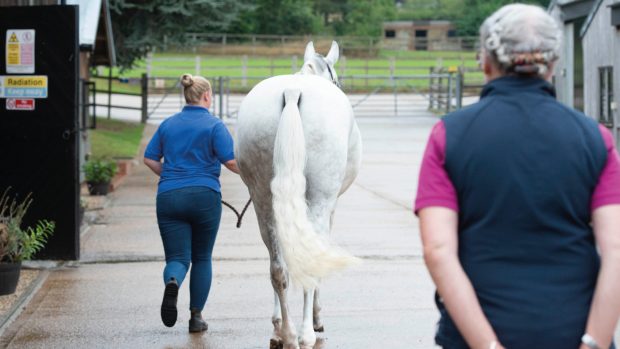The British Equine Veterinary Association (BEVA) is calling for a nationwide scheme to tackle the issue of stray horses on the road network.
In early 2007, in conjunction with Horse & Hound, the British Horse Society (BHS), the Chief Fire Officers Association, the Association of Chief Police Officers and BEVA launched the Emergency Services Protocol (ESP) — a national guideline for all those involved in animal rescues, clarifying responsibilities and procedures (news, 5 April 2007).
BEVA senior vice-president Professor Josh Slater said the protocol had made “tremendous progress” throughout the country including training in rescue techniques for firefighters and vets and a nationwide equine veterinary directory enabling Highways Agency (HA) officers to locate a nearby vet.
An Equine Rescue Fund, to cover emergency vet fees when the owner cannot be traced, has also been established.
“There is real energy and momentum behind the initiative,” said Mr Slater. “The single area that remains a challenge is stray horses because they fall between the various groups that are involved.”
According to the HA, around 200 incidents each year involve strays on the roads. One of the main issues is that the majority of horses involved in these incidents are not injured, and therefore neither the fire service nor a vet would be called. The HA is first on the scene but, unlike firefighters and vets, officers are not trained in animal handling, so need assistance.
HA spokesman Alison Smith explained: “Our traffic officers, many of whom are unused to handling horses, may find it difficult to deal with a distressed animal.
“The majority of strays are healthy and are removed from the network by us with assistance from police, owners, local farmers or members of the public.”
She added: “Injured horses can result in longer delays on the roads and become more stressed the longer they remain on the highway.”
But the HA’s work to date has relied on local cooperation. Responsibility for catching the horse and where it can be taken once caught are still unresolved.
Anne Catchpole, BEVA’s marketing executive for ESP, says that on a congested road network, the problem is not just a concern for horse owners.
“It has become a hot topic because there is no one to take responsibility and roads can be closed for hours,” she said. “We need a national scheme set up to determine where the horse goes and how, and basic horse training for HA officers.”
Hampshire Fire and Rescue Service, which heads the ESP training, has already agreed to instigate HA officer training, and BEVA is pushing the idea of “green yards” which are already operating successfully in some areas of the country.
Incoming BEVA president Chris House said: “Currently, police tend to put strays in the nearest field, which just transfers the problem off the road and on to the landowner.”
The idea of a green yard is that each region would have a place that can shelter horses until the owner collects them.
“But the problem is there is not enough funding or political will to deal with it through the local authorities,” said Mr House.
For more information on the Emergency Services Protocol, or to donate to the Equine Rescue Fund, visit www.beva.org.uk.
This article was first published in Horse & Hound (8 January, ’09)




